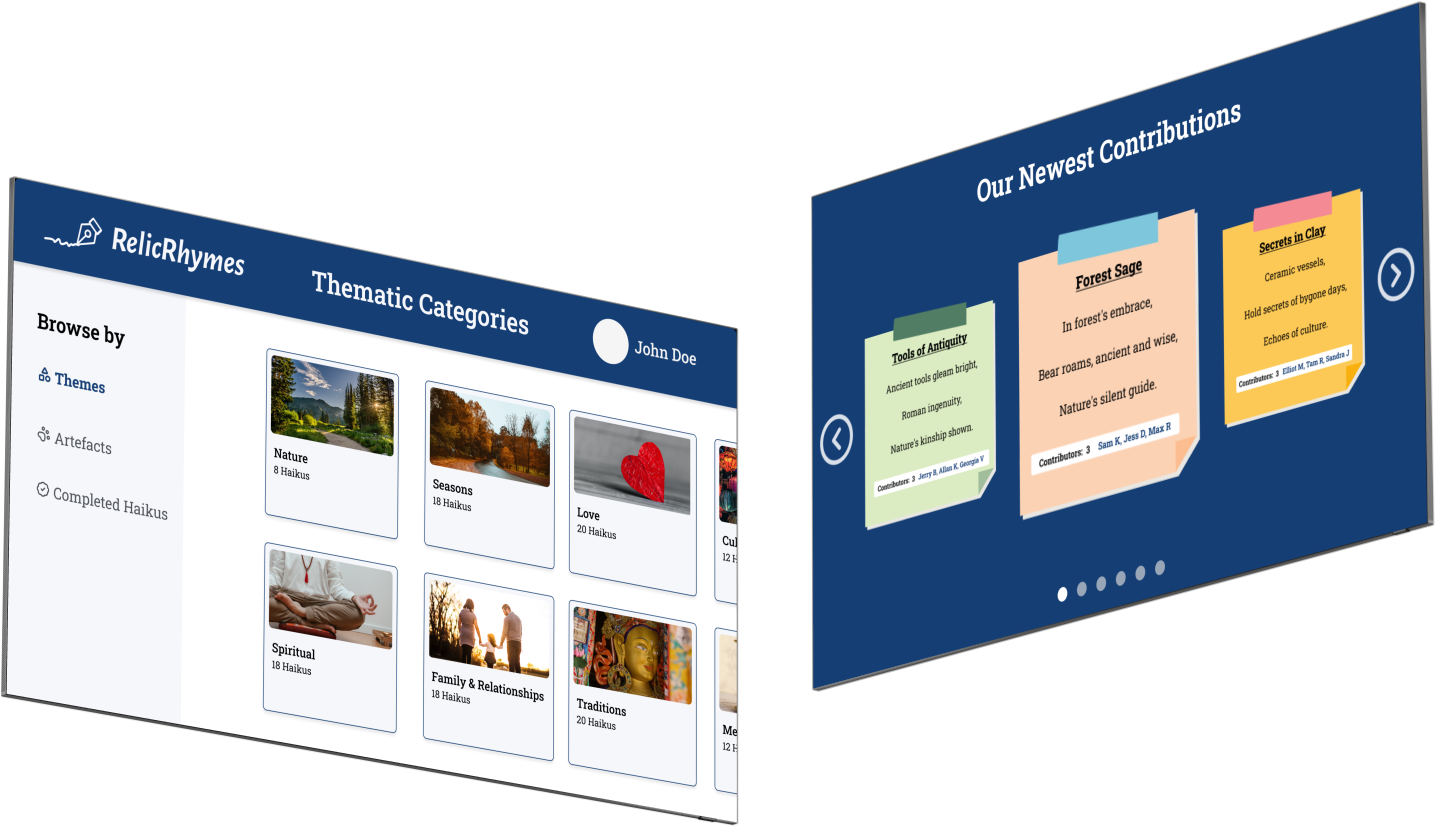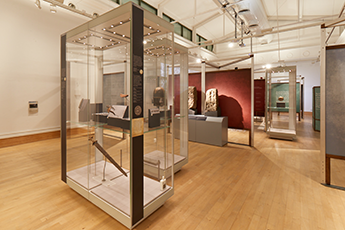RelicRhymes is a collaborative system designed for the University of Nottingham’s Archaeology Museum. It invites the visitors to collectively craft Haikus which are inspired by the artefacts displayed in the museum.
Project Duration: 3 months
Role: UI/UX Designer

RelicRhymes is an innovative, interactive system designed to transform the visitor experience at the University of Nottingham’s Archaeology Museum. By allowing users to collaboratively craft Haikus, the system engages visitors in a creative process that connects them more deeply with museum artefacts and themes. With a user-friendly touch interface and a dynamic public display, RelicRhymes encourages contributions from all visitors, fostering a sense of community and shared expression.
Museums often struggle to engage visitors in ways that go beyond passive observation. Traditional exhibits, while informative, can sometimes fail to foster interactive and immersive experiences, especially for younger or more tech-savvy audiences. Visitors may feel disconnected from the artefacts on display, making it difficult for them to fully appreciate the cultural and historical significance of the items.
These challenges highlight the need for innovative systems that invite visitors to contribute, collaborate, and create, making their museum experience more interactive, memorable, and personally meaningful.
RelicRhymes addresses this problem by transforming passive observation into active participation, using collaborative Haiku creation to bridge the gap between visitors and the museum’s historical artefacts. Through this system, museum-goers not only learn but also co-create and engage in a shared, collective narrative.
RelicRhymes integrates two plasma screens—one for user interaction, and another for public viewing. Users contribute to Haikus in a collaborative, creative environment inspired by museum artefacts and themes

-
Requirements
Gathering
To begin, we collaborated with the Keeper of the University of Nottingham Archaeology Museum to gain a deep understanding of the museum’s needs and the expectations of its visitors. This included an in-person visit to observe how visitors interacted with the exhibits. From this, we uncovered a clear need for a more engaging and interactive experience to help visitors connect with the artefacts on a deeper level. -
Stakeholder
Engagement
Engaging with museum staff and key stakeholders allowed us to explore possibilities for enhancing visitor engagement. These discussions shaped our understanding of the museum's goals and laid the groundwork for an interactive system that would encourage collaboration and creativity among visitors.


We brainstormed several potential solutions and presented three concepts — RelicRhymes, Artefactly, and Palette of the Past to the museum staff. After gathering valuable feedback, we refined the ideas and selected RelicRhymes as the most promising solution. It stood out for its ability to engage visitors in a creative, collaborative process through the shared crafting of Haikus, connecting people with both the exhibits and each other
RelicRhymes was designed with specific features to engage visitors and enhance their experience. Each feature supports the system’s goal of transforming passive observation into active participation.


RelicRhymes was designed with specific features to engage visitors and enhance their experience. Each feature supports the system’s goal of transforming passive observation into active participation.

After defining the core features and principles, we began developing the system. Wireframes were first created to map the interaction points and refine the structure, followed by a high-fidelity prototype in Figma.
In this phase, we created paper-and-pen wireframes to outline the user interactions within the system. These initial sketches focused on how visitors would navigate the interface to contribute to Haikus and explore various categories. This step was essential in refining the overall structure and flow of the system, ensuring that the design met user needs effectively.



Prototype for Screen 1: (Visitor Interaction)
Prototype for Screen 2 : (Public Display)
RelicRhymes illustrates the potential of technology to revolutionise the museum experience by fostering creativity and collaboration. By inviting visitors to engage actively with artefacts through the art of Haiku, we created a platform that not only enhances individual engagement but also cultivates a sense of community among visitors.
Working on RelicRhymes gave me a deeper appreciation for how thoughtful interaction design can transform passive environments into collaborative experiences. I learned how to:
- Communicate ideas effectively to stakeholders, and incorporate feedback early to align design goals with real user needs.
- Connecting theory to real-world design decisions to enhance user collaboration and engagement.
- Design within constraints, including physical space limitations and time-bound academic schedules, while still delivering a complete experience.
- Translate abstract concepts into tangible prototypes, especially when designing for public, co-located interactions.
- Balance creativity with structure by creating a system that encourages artistic freedom while maintaining usability.